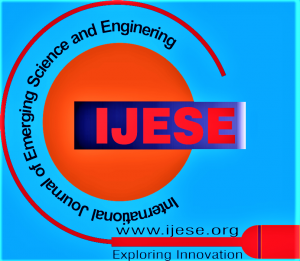![]()
Wireless End to End Image Transmission System using Li-Fi Technology
Abishek S1, Habeeb Rahman J2, J. Bino3
1Abishek S, Department of Electronics and Communication Engineering, St. Joseph’s Institute of Technology, Chennai (Tamil Nadu), India. E-mail:
2Habeeb Rahman J, Department of Electronics and Communication Engineering, St. Joseph’s Institute of Technology, Chennai (Tamil Nadu), India.
3Mr. J. Bino, Department of Assistant Professor, Electronics and Communication Engineering, St. Joseph’s Institute of Technology, Chennai (Tamil Nadu), India.
Manuscript received on 25 January 2024 | Revised Manuscript received on 10 May 2024 | Manuscript Accepted on 15 May 2024 | Manuscript published on 30 May 2024 | PP: 26-30 | Volume-12 Issue-6, May 2024 | Retrieval Number: 100.1/ijese.C256112030224 | DOI: 10.35940/ijese.C2561.12060524
Open Access | Editorial and Publishing Policies | Cite | Zenodo | OJS | Indexing and Abstracting
© The Authors. Blue Eyes Intelligence Engineering and Sciences Publication (BEIESP). This is an open access article under the CC-BY-NC-ND license (http://creativecommons.org/licenses/by-nc-nd/4.0/)
Abstract: The first and most important objective of this project is to convey the image through the utilization of a light-emitting diode (LED). The innovative technique known as visible light communication (VLC) holds considerable promise for implementing high-speed, large-capacity, short-range wireless data transmission. It is gaining popularity due to the growing use of solid-state lighting systems. Additionally, LED lights change frequency at a rate that is substantially faster than the human eye can perceive. This is in addition to the fact that radio waves have a higher repetition rate than LED lights, which results in significantly greater speed than Wi-Fi. This work presents a prototype of a real-time image broadcast system. Light-emitting diode (LED) lights are used in the prototype since they are widely available and reasonably priced. The scope of the work encompasses the possibility of making information and communication accessible through the use of LED bulbs in a manner that can be implemented in various settings, including homes, offices, organisations, and corporations. Suppose the LED sources are positioned correctly and concentration effects are increased. In that case, it is feasible to obtain a real-time image with a maximum distance of two feet, as indicated by the testing results. In addition to being designed to last, the LI-FI (Light Fidelity) light source features a broad range of digital settings that can be adjusted, and its efficient design makes it simple to operate.
Keywords: LED, VLC, Wi-Fi, LI-FI
Scope of the Article: Wireless Communication
